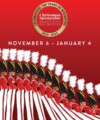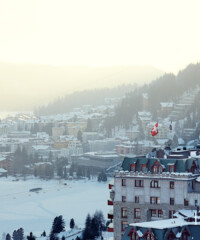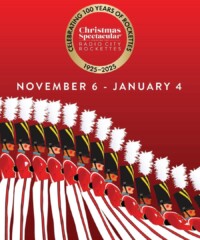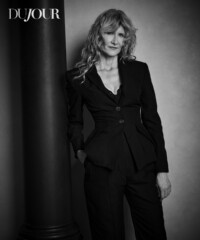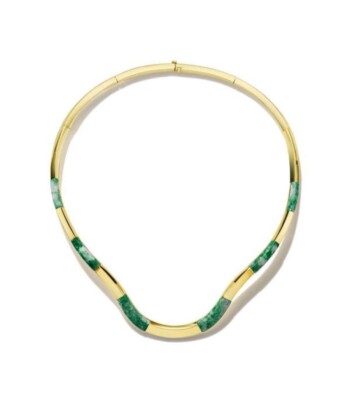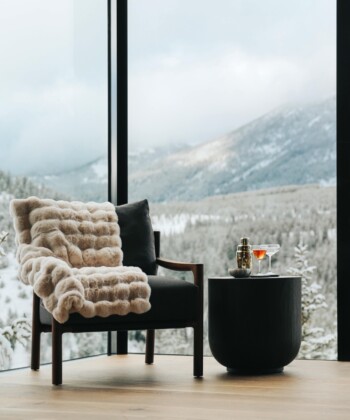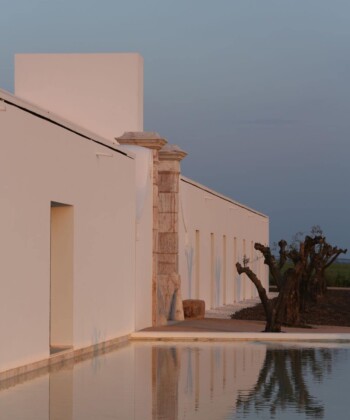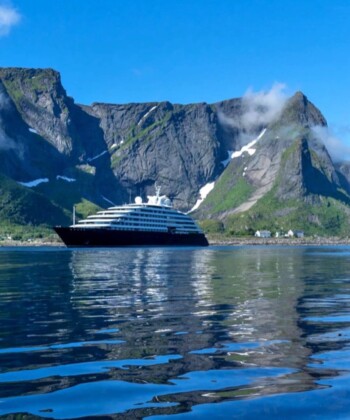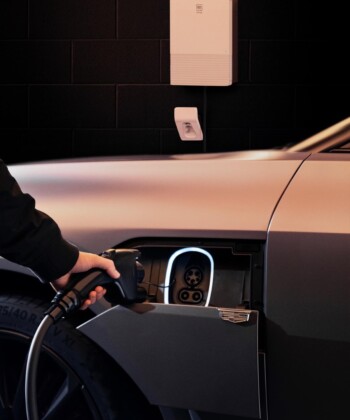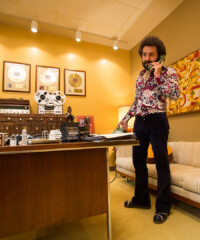The VIP tent at the White Turf festival in St. Moritz feels a bit like the capitol in The Hunger Games: decadent with a hint of the obscene. It’s the dead of winter and while it may be snowing outside, it’s practically balmy in here. Sixty handsome waiters tend to lavish dessert tables and hulking cheese wheels and carving stations with slow-roasted beef. The crowd is a mix of fashionable septuagenarians in sable, Euro moms gripping clutch-size puppies, banker types from Zurich and raucous boarding-school brats. Three tons of mineral water are on hand, plus a coat check boasting more fur than a Petco. If you haven’t guessed it, this mid-winter celebration is a logistical nightmare—especially considering where we’re standing. “A lot of people don’t realize we’re on a frozen lake,” says Claudia Grasern-Woehrle, who has handled press for White Turf for the last 15 years. Talk about Swiss precision.
Of all the wild happenings in St. Moritz, a celebrated playground for the well-heeled, White Turf may be the chicest. Since 1907, thousands of spectators have traveled from all over Europe each February to watch horses race at breakneck speed across a frozen Lake St. Moritz, and competition is fierce; thoroughbreds and Arabians (fitted with special horseshoes) often arrive a week in advance to acclimate to the higher altitude. The races take place over three consecutive Sundays, and include flat racing and harness racing (where the horses pull buggies). But the highlight is always the Credit Suisse Skikjöring Trophy, a curious contest where drivers (on skis!) are dragged around the mile-and-three-quarter frozen track by their steeds. Heinz E. Hunkeler, general manager of the venerable Kulm Hotel, smiles as he attempts to explain this very St. Moritz endeavor in heavily accented English.
“I was born here, I grew up here, I have seen it as a small kid,” he says of skikjöring (the Norwegian word for ‘ski driving’). “I always said definitely I’d like to try it out once as well. You have this turf of snow—little snowballs, flying into your face.” He laughs, trying to find the best comparison. “It’s more than a facial.”
Building a racetrack and erecting tents requires an army of 60 people working seven days a week, and there’s no time to waste. Engineers begin poking holes in the ice’s surface in January to measure thickness; the magic number is between 40 and 50 centimeters, and preparations begin the moment it’s safe. “This year it was late,” explains Grasern-Woehrle. Were people nervous? “Um, sometimes, yes. Yes. Because it’s nature, right?” If the lake’s border isn’t quite thick enough, a helicopter will airlift supplies (and man power) into the center so construction can get underway.
There’s no margin for error. Ultimately the ice must withstand 2,900 tons of equipment, including running stalls and starting stalls. Seventy-five tents—situated like high-end barracks around one half of the track—will house a variety of pop-up cafes, boutiques and even a BMW dealership, which in 2015 showcased the X5 xDrive50i (sticker price: upwards of $80,000), plus the massive grandstands—the best place to view the sport. Nine semi-trucks transport food and equipment to the lake. Chef Remo Siebers of Gamma Catering, who presides over some 50 cooks, describes the often chaotic scene in the kitchen, where the ovens are constantly working. “Some years,” he says, “we are standing in the water.”
Perhaps one shouldn’t be surprised to find such unlikely celebrations in St. Moritz, a destination known for its so-called “champagne climate.” It’s a town whose history is littered with firsts. The Engadin valley was the birthplace of bobsled racing in 1890, and Switzerland’s first ski school later opened here in 1929. St. Moritz is now celebrating 150 years of winter tourism, and its game is on point. There are five five-star hotels in town and a luxury arms race is well under way. Staff at The Carlton will send a chauffeur-driven Bentley to fetch guests from the train station (or more likely, from the airstrip for those flying private). The Kulm Hotel offers dog-sitting services and a pillow menu complete with nine options varying in firmness and scent. No request is too outlandish. For a recent party at Badrutt’s Palace Hotel—where the lobby is referred to as the “living room” of St. Moritz, because of its high see-and-be-seen quotient—the manager tells us that he recently imported actual live seals to swim in the pool.
Which is to say nothing of the food. A branch of Matsuhisa recently opened in Badrutt’s Palace, where the hotel’s wine cellar is stocked with some 40,000 bottles. The most expensive item is a magnum of Dom Pérignon covered in white gold, which sells for 20,000 Swiss francs (or roughly $21,000). I asked the Palace’s sommelier, Florian Sender, what mistake people make when ordering wine. He smiles, saying: “I don’t think they make a mistake if they are ordering wine.” (His preferred après-ski drink is Salon S champagne, which retails for a more reasonable $300 a bottle.)
The proper way to do White Turf, of course, doesn’t involve getting much rest. Via Serlas is St. Moritz’s answer to Rodeo Drive, and the houses of Chanel, Gucci and Bottega Veneta are all represented. Maybe it’s the altitude, but this is the kind of place where a Brioni suit could be considered an impulse buy. Then there are the late-night activities. The annual White Turf Lake Dance draws some 600 people to a tent on the ice where a DJ spins a mix of EDM and hip-hop classics until six in the morning. The iconic King’s Club in Badrutt’s Palace pimps $40 cocktails to the likes of Kate Moss and Robert De Niro. (Every hotel in town claims Charlie Chaplin, Andy Warhol and Alfred Hitchcock among its famous guests.)
But the best party is happening off piste at La Baracca, a no-frills ski lodge downtown where aging locals and private-school snobs mingle seamlessly, singing along to guilty pleasures like “Sweet Caroline” and “Mambo No. 5.” You’ll notice no one is looking down at their phones, and that’s because there’s no better spot in town. Nicolà Hofer, an absurdly handsome 25-year-old sports-marketing agent and member of the town’s Cresta Club, explains Baracca’s appeal: “Great food, good mixture of people, nice music, dinner and party at the same place.” As if to prove a point, one of his friends grabs a handful of snow from an open window and throws it clear across the bar. When asked if he’ll be going to White Turf in the morning, Hofer sips a local Swiss beer and squints: “It starts quite early, no?”
The definition of “early” in the Swiss Alps is subjective. White Turf’s first race doesn’t start until after noon, but plenty of spectators are milling about before then, keeping warm by sipping champagne and slurping oysters. BMW isn’t the only blue-chip firm flogging its wares. Representatives from Gulfstream are on-site as well, as are educators from a top Swiss boarding school, Lyceum Alpinum Zuoz. Exclusivity is this town’s raison d’être, with velvet ropes everywhere from the Cresta Club to the members-only Dracula Club, founded by Gunter Sachs—one-time husband of Brigitte Bardot and a man the Sotheby’s catalog once referred to as a “playboy, businessman, gallerist, museum director, art collector, filmmaker, celebrity, photographer, astrologer, director and sportsman.” (Ask your concierge to help you get in.)
Like any international sporting event drawing a fashionable crowd, there’s more than food and drink to distract you at White Turf. There’s also gambling. The highly anticipated Grand Prix of St. Moritz—the longest and most important flat race at White Turf, running 2,000 meters—falls on the festival’s final Sunday, and it carries the highest purse in Switzerland, with the winner taking home 111,111 Swiss francs. Gamblers can evaluate thoroughbreds on-site before placing their bets. Though for most spectators, betting here is less of a science and more of, well, craps.
Luigi Sala, a White Turf board member who ran the betting tents for many years, explains that the Swiss government will take 35 percent of a foreigner’s winnings. Also, he says, “We don’t work with odds the way you have with the bookmaking business in the States.” He suggests a different tactic. “If you are here with your partner,” he says with a smile, “just have a look at the nice-looking jockey and the nice horse and then you bet on that. Maybe you are lucky and you can enjoy the big pot!” Or, you can always bet on the horse with the most amusing name. And there are plenty of choices. At the 2015 White Turf, a man could be heard cheering loudly for a horse named Buddhist Monk, shouting: “Go Buddhist! Go Buddhist!”
No matter where you stay—or how much money you wager—you won’t soon forget the sight of a grown man on skis being pulled around a frozen lake by a horse. I caught up with Franco Moro, 55, who won the 2015 Skikjöring Trophy, to find out how he trains for such a strange, adrenaline-filled contest. It turns out this is a silly question. “It’s impossible that you practice,” he says of a sport likened to Ben-Hur on snow. Fair enough. Large frozen lakes and specialty horseshoes are hard to come by. Besides, celebrating is more fun than practicing anyway. “Tonight we’re gonna do a big dinner with the whole staff from the horse and the owner and the trainer,” Moro says as he proudly exits the winner’s circle. “We go to Baracca probably.” Get in line.


